At first glance, an impressive fresco in San Brizio’s Chapel in the Orvieto Cathedral appears to show Christ addressing a crowd – but after closer inspection, one realizes that the main figure is, in fact, the Antichrist, with a demon speaking into his left ear. Luca Signorelli’s painting, The Preaching and Punishment of the Antichrist, inspired artist Michelangelo and psychoanalyst Sigmund Freud to produce some of their greatest works. It also inspired American theologian and priest Matthew Fox to write his new book Trump & The MAGA Movement as Anti-Christ: A Handbook for the 2024 Election. In part 1, Fox argues that the archetype applies to the darker sides of MAGA and its Christian-nationalist backers.
Dark Money Aligned with Neofascists in Catholic Church – Matthew Fox (former Catholic priest) part 2/2
Talia Baroncelli
Hi. You’re watching theAnalysis.news, and I’m Talia Baroncelli. I’ll shortly be joined by Matthew Fox, an American Episcopal priest who just wrote a book called Trump & the MAGA Movement as Anti-Christ.
If you’d like to support the work that we do, you can go to our website, theAnalysis.news, and hit the donate button at the top right corner of the screen. Make sure you’re on our mailing list; that way, you’re always notified every time we publish a new episode. You can like and subscribe to the show on YouTube or on other podcast streaming services such as Spotify or Apple. See you in a bit with Matthew Fox.
Joining me now is Matthew Fox. He’s an American Episcopal priest as well as theologian. He was formerly a member of the Dominican Order within the Catholic Church. It was actually Cardinal Ratzinger who led an inquiry, a so-called imposition, if you will, into Matthew Fox’s writings and his work, and decided to silence him and then kick him out of the Catholic Church in 1993.
Matthew Fox has written numerous books, 43 books on culture and spirituality, including Original Blessing, The Coming of the Cosmic Christ, Spirituality Named Compassion, and The Reinvention of Work. Much of his writings are characterized by a pro-environmental, climate-conscious, Christian spirituality.
He’s here to speak about his new book, which was actually just published, and it’s called Trump & the MAGA Movement as Anti-Christ. Thanks so much for joining me today, Matthew.
Matthew Fox
Thank you, Talia. Happy to be with you.
Talia Baroncelli
You went to the town of Orvieto in Italy. It’s just an hour or so away from Rome. You went to the very famous Duomo there, and you went inside the Chapel of San Brizio to see a really amazing painting by Luca Signorelli called The Preaching and Punishment of the Antichrist. This painting is said to have inspired Michelangelo and even Sigmund Freud. I wanted to ask you, what was your original impression of this painting, and how did it inspire you to write this book about the Antichrist?
Matthew Fox
Well, I was in Orvieto to teach a week workshop on Thomas Aquinas, whose 800th anniversary it was. The anniversary was his birth, the 750th anniversary of his death. Aquinas himself, who was Dominican, had lived in Orvieto for a while. There was a university there and he wrote poetry there.
We took this little excursion to the Cathedral, which is very famous. Some people call it the most beautiful church in Europe. I was brought into this chapel, this very large chapel and room within the Cathedral, and put in front of this large fresco, and I stared at it. At first I thought the fellow who was preaching was Christ, but then I noticed he looked a little off. His hair was funny. It was like two horns. Then I realized the devil was whispering to him in his ear. I noticed the crowd, which was large. I think I eventually counted 156 characters in the picture. In the crowd, some were listening, and some were beating up people and even killing people in the crowd. There was a lot of violence going on. There were some warriors in the back, dancing in all-black. One art historian said they were like [inaudible 00:03:47]. In front of a church, they were dancing.
There was a lot of drama in this painting, but again, my very first response, my first words came out of my belly, not my head. I remember. I felt it in my gut. I said, “It feels like Donald Trump.” And the more I stared at it, the more that seemed to be true. And then I had my work to do in Orvieto, and I flew home, but I remembered that painting.
When I got home, I did a little research and found that Freud had an amazing relationship with that painting. He called it the finest painting that he’d seen in his entire life. He returned to Orvieto three times. He went to Orvieto just to study the painting. When he first saw it when he was here, his father had died, so he was still in mourning, and it was very significant for him. Many Freudian scholars say that not just that painting but the other two paintings, the painting of Hell and the painting of The Resurrection of the Flesh that the same artist created, Signorelli, in that chapel, all really influenced Freud’s psychology because it was Eros and Thanatos dancing back and forth. All that came very primal, I think, to Freud.
There’s been a whole book written, I’ll hold it up here, called Freud’s Trip to Orvieto. It’s an amazing book. Very well done and very thorough by art historian Nicholas Fox Weber. It’s a very amazing book. I actually lead off my book, chapter one is on Freud’s experience with this painting. As you alluded to, others, Michelangelo, but others, too, have had profound experiences with this painting. I’ve run into contemporary people who were very moved by it and affected in a deep way.
Talia Baroncelli
Well, you also wrote about how… or you referenced Nicholas Weber’s writings on Freud’s visit to Orvieto, and he mentioned how this painting really influenced Freud’s views on masculinity. That was, at the time, very important because Freud was Jewish. He was an atheist, but he was Jewish, and he was living in Vienna at a very anti-Semitic time period at the end of the 1800s and the beginning of the 1900s. Some people at the time would have equated Jews with men who were emasculated, weak, or those sorts of horrible stereotypes. So his views on masculinity were also largely impacted by seeing this painting. I was wondering what your thoughts are on that, given that you’ve also written about authentic masculinity.
Matthew Fox
Well, you see, Freud told this story when he was eight years old. His father told him he was walking down the street in Vienna one day, and an anti-Semite walked up to him and threw his hat, took his hat off, and threw it in the street. Freud said to his father, “What did you do, Daddy?” And his father said, “I went into the street and got my hat.” That was a very important story for Freud because he felt that his father was not manly enough. He wasn’t strong enough to [fight against] anti-Semitism, and he criticized his father his whole life for that. And then he began to wonder if this is part of Jewish maleness, that we’re too passive, that we’re being attacked so often, we have to fight back.
There’s one story told that when he was a father, he was in a park, and someone approached him in the same manner and abused him in some way because he was Jewish. He picked up an oar from a boat and went chasing after this guy, screaming that he was going to kill him or something. I guess he definitely had done some work in overcoming that shadow experience he had with his father.
Another thing that came up for Freud again was that in the other paintings, in particular, in this chapel, especially Hell and Heaven, the men are all nude, and they’re all very, very muscular and strong. The thinking is that this touched Freud’s interest in strength, masculine strength, that he felt he had not witnessed enough growing up in the Jewish community.
Talia Baroncelli
What about Carl Jung? Because your book is, at least, studded with reference to Carl Jung, the psychoanalyst who wrote about the archetype of the Antichrist. Could you explain what Jung was referring to when he was speaking about the Antichrist and why Jung was saying that we must identify the Antichrist where we see it and speak about it as much as possible?
Matthew Fox
Exactly. Jung says that if we don’t speak about the Antichrist and shed light on it, it will have its way. Of course, he felt that about other shadows that humans carry, too. But he was especially strong on this topic of the Antichrist.
Now, as I point out in my book, of course, I have a whole chapter on Christ as an archetype, and that precedes the chapter on the Antichrist as an archetype because, obviously, the Antichrist is the opposite of Christ. So you kind of have to know something about Christ. And, of course, I’m dealing here with Christ as a symbol. You could substitute other names, such as the Buddha or what have you, but a symbol for our better angels, for what’s good in humanity, our capacity for compassion, our capacity for forgiveness, our capacity for nonviolence, our capacity for love, and certainly for justice. So all that is a projection we make on Christ. But obviously, the Antichrist is not about justice, or love, or forgiveness; it’s about revenge, hatred, injustice, greed, and those forces that all humans are subject to, that we’re all capable of, those forces that bring about the opposite of what Christ represents.
So Jung is warning us, just as you say, that the most dangerous thing is to ignore the Antichrist, not to name it. I know that one of the first people to read my book, and it’s on a finished stage, if you will, a mother and grandmother, a woman from the Boston area, said to me that just reading it relieved this weight that was on her shoulders because I named something for it. By naming evil, you’re in a place to think more objectively about it and more carefully, and it’s not running your decision-making.
One thing that I marvel at is how many followers Trump and the MAGA movement have. What that indicates to me is that a lot of our population is not thinking real clearly that we’re just letting these energies that are contrary to everything Christ stood for, but also contrary to what authentic humanists stand for, we’re just letting them run around. They’re like evil spirits that can take over and can take over a nation.
All this, I think, arises when you’re dealing with these archetypes. Archetypes are very powerful. There’s [Marion] Woodman, the Jungian analyst who lives in Toronto. She used to say that to think about the power of an archetype, think about your favorite song or your favorite painting, your favorite movie, and then multiply the energy that gives you 100,000 times. It’s like a jolt, an electric jolt. If this is true of a positive archetype, it’s also true of a negative. Remember, it’s not just that Christ and the Antichrist are opposites, but that the Antichrist wants to displace the Christ with itself. And so that really ups the ante on all this. It’s not an intellectual discussion about right and wrong or this or that choice. It is about the fact that the Antichrist wants to make its own kingdom, which is very different than the kingdom of the preaching of Jesus, for example, a kingdom of God that is about justice and let the justice flow like water, as Isaiah talked about, and so forth. That’s one aspiration. But the Antichrist is not only against that but wants to displace it with itself.
And, of course, the paintings. We haven’t really talked about the painting, but the painting, the picture of the demon whispering into the ear of the Antichrist, is itself, I don’t know, it’s so powerful, and it’s so pitiful. It’s so evil that you can feel the energy here that can happen when humans do not shed light on these shadow characters.
Talia Baroncelli
Well, we could also say that people who just blindly follow an autocrat are giving into this herd mentality. They may not be cautious or use critical thinking skills, or they espouse the views that this particular autocrat has. But would you say that the archetype of the Antichrist is more powerful to use and to just say that people have herd mentality because there’s something so insidious about that archetype?
Matthew Fox
I do. I’ve written two other books on evil. One is 450 pages, and the other one is about evil in the Catholic Church in my lifetime. But this book, which is much shorter than either of those, is dealing with an art form. After all, it was an artist who painted this fresco. Another artist in history, whose painting I reproduce in the book is Hildegard of Bingen, who was recently made a saint in the church and a doctor of the church, which is a big deal. Only three other women have been made a doctor. She paints a picture of the Antichrist that is X-rated, actually, because he had a very big penis and was attacking people, etc.
It’s not as if Signorelli made up the archetype of the Antichrist. The Antichrist language is found in the Book of Revelation in the Bible and in the Book of Daniel, which is very apocalyptic, and in other places. And, of course, that’s what’s really unique about my book. The fundamentalists have been running with the word Antichrist for many decades if not centuries. But I’m one of the first people I know who represents a justice-oriented spirituality born of the prophetic tradition of Israel; that is, I’m co-opting. I’m taking it away from the right wing and applying it to them and using it, therefore, from a perspective that is a liberation perspective, where we’re talking about getting out of denial about destroying the environment and the matricide, the killing of the mother, the misogyny that is implied in killing Mother Earth and denying that we’re doing it, and all the rest.
That’s what really comes through to me as I study and wrote this book. The term, the archetype, the image of the Antichrist, is a way to summarize in really one word, one image, our capacity for evil. I say our because we’re all capable of evil, and that’s why we always have to be questioning what our politics are, what our decisions are, and what our values are. It’s an ongoing process. But I do see a frozen moment here where a whole cult is around one person, and he doesn’t carry all the responsibility. Things were set up for him before that. For example, Citizens United. It set the whole country up for politics that was run by dark money and a Supreme Court that was created by a very shady character within the far right wing, which would be the fascist wing of the Catholic Church. I’m talking about the Knights of Malta and Opus Dei. I’m talking about Leonard Leo, who himself is responsible for each one of the six extreme, conservative members of the Supreme Court.
This has found real meaning. And, of course, the destruction of the Voting Rights Act. I mean, I’m old enough to have lived through the pain, suffering, jailing, and murders of all these innocent people, including, ultimately, Dr. King, murdered as he was, who filled the jails. I lived in Oakland for 35 years. I met many, many Black people who were teenagers and were in jail in the South in the fight for civil rights and for voting rights. Under the present Supreme Court Justice, consciously, they have dismantled the Voting Rights Act that was born out of suffering, bleeding, jailing, and even murder. Because this happened slowly, like the frog in the water, we think it’s okay or something. I don’t know, half the country does, I guess. It’s simply contrary to everything that democracy is about, as Lincoln defines it, of the people by the people for the people. It’s trying to whittle out certain people because of the color of their skin or the history that they carry as ex-slaves.
This is serious stuff. 800,000 Americans died in the Civil War to end slavery. Then, we established three constitutional amendments to end it. Then what happened? The North withdrew its troops, and you had Jim Crow lynchings and all the rest, right up to the 1950s, right up to the civil rights movement. This is a serious matter, and it’s definitely Antichrist-like.
Talia Baroncelli
Right, because throughout your book, you also refer to MAGA as “Make America Grotesque Again.” You’re referring to the history of the United States and how there is this tension there, how the stain of slavery on American history, essentially, how the country and the US’s history is very intertwined with bringing slaves from Africa in order to build up the United States’s economy and create government in the state. Then you speak about the Civil War, but how there was also a promise in the American Constitution in the idea of all people being created equal. Of course, at the time, that wasn’t interpreted in the correct way. It was only men, and obviously not Black men, who would have those rights and who were entitled to those rights. But you speak about the idea there of including everyone.
Matthew Fox
That went on until 1920, that women were not able to vote, so they were not equal until 1920. So, yeah, there’s this grotesqueness in our history that we have to look at. That’s how we learn, and that’s how we make some progress.
One of the examples I give in the chapter on “Make America Grotesque Again” is this one: in the 19th century, there were 30 million buffalo in the Plains of America. Everyone knew that the buffalo were very closely aligned with the entire Native American culture in the Plains. Out of racism, they went after the buffalo. There were 30 million, and when they finished their job, there were 500 buffalo left in the Plains. That’s grotesque by any figuration. Go from 30 million of these beautiful beasts to 500 in a period of 12 years.
Then also, something I learned after moving to California, because I’m a Midwesterner myself, and I had no idea, is that the Governor of California in the 19th century put a reward on the heads of Native Americans: $50 if you kill a Native American and prove that you did; bring the ears in or something. This is done by the Governor of California. I think that’s pretty damn grotesque, too.
Talia Baroncelli
The Indigenous people were also subjected to essentially genocide.
Matthew Fox
Genocide, of course. Then you have the Asian stories, too. Of course, the Japanese, during the Second World War, had everything taken from them; they were put in concentration camps, but also, the Chinese were forbidden to have wives, for women to come over, and to vote until, I think it was the late 1930s or the early ’40s.
We have to admit these grotesque realities in our history. It’s not about beating up on ourselves. There have also been great achievements in our culture. But we can’t sweep evil under the rug. When we do, as [inaudible 00:23:52] points out, it’s very dangerous because that shadow will come up in other forms if we do not deal with it.
Talia Baroncelli
Well, I wanted to turn to the chapter that essentially forms the meat of your analysis of the book, which looks at the 18 signs of the time, the Antichrist in American politics. I’ll just read off the 18 issues or characteristics of the Antichrist, as you name them. You’re talking about the MAGA movement, and number one would be a countless stream of lies, followed by Project 2025, followed by Stormy Daniels trial, then comes the 2020 elections, the elimination of protections, denial of climate change and a refusal to work to combat it, a dark money takeover, racism and Christian nationalism, Christofascism, threats of violence, the 2021 insurrection, so-called abortion laws, sexual obsessions, a blueprint for destruction of democracy, a fascist paradise, normalizing hate, support of Putin and other dictators, blasphemy and adultery. How did you come up with these 18 signs of the time, as you call them?
Matthew Fox
Well, of course, I just looked around. I follow the news. The hard part was limiting it to 18, but I didn’t limit it to 18 because 18 is 6 plus 6 plus 6. That number 666 goes along with the apocalyptic language of the Antichrist. I thought that was a clever way to package it. Obviously, there could be more. Of course, I talk about patriarchy, and I have an appendix about what I would call a misconstrued masculinity that I think is very important, too. Really, especially in the chapter in Hildegard of Bingen, she is clearly, at least unconsciously, naming patriarchy as the primary expression of the Antichrist because she paints the male sexual organ as being particularly aggressive and destructive. I think that she’s talking about patriarchy without actually using that particular word. I do think you can see a great shift in history going on, and certainly now with a woman candidate nominated to be President, that women are coming into their own power, and men are learning to redefine their roles in the world. It’s a struggle for a lot of people, but I think it is a sign of something positive happening.
That, again, we’re owning up to the fact that misogyny has been baked into human relationships for probably the last 8,000 years or so, and it’s not sustainable. Our patriarchy is not sustainable. We have to find a healthy gender balance, and I talk about the sacred masculine and the divine feminine. And men have to redefine our roles in the world and our identities.
I wrote a book about that where I laid out 10 archetypes to bring healthiness alive again, such as Father Sky, the Green Man, Spiritual Warrior, Hunter-gatherer, Fatherhood, and so forth. These are powerful and positive energies that can affect men and women alike in very, very positive ways in the new cosmology by introducing us to Father Sky in a whole new way, that the sky is anything but dead and an Earth-like machine, which is what we were taught for several hundred years in the modern era. In fact, a star has been born every 15 seconds. So there’s a lot of birthing going on in the universe, obviously. So all this brings together Mother Earth, Father Sky, and all of our powers of creativity and joy, the joy that comes with bringing beauty and newness into the world.
We have a lot going for us, especially with the new cosmology. Now is the time not only to recognize the oppression of women but also to recognize that when men oppress women, it’s just like when masters oppressed slaves, masters themselves were destroying themselves. Their own souls were being seriously affected in a negative way by slavery. I think we’re still dealing with that. I think a lot of the yearning to put up more statues to honor the Confederate soldiers and all this, I think a lot that is a sign of the reluctance to let go of the myths that the Civil War was, I should say, fought for good reasons on both sides. No, I don’t think so. I think that slavery is slavery, and it’s evil, and humans can do better than that. Certainly, that’s what people like Christ or the Buddha or Muhammad, talked about. We can do better than this. I think all that’s involved in this struggle.
Talia Baroncelli
There’s so much to talk about within that chapter where you speak about the 18 various iterations of the Antichrist. We’ll come to the un-Supreme Court, as you call the Supreme Court, and dark money. But I just wanted to ask you something else about the environment because it’s very clear from your writings that you espouse this view of the environment as something that has to be cherished. You speak about Mother Earth. I mean, that’s, I think, initially why there were problems when you were in the Catholic Church and why Ratzinger initiated his so-called investigation or inquisition into your work because you were using that language, speaking of the Earth as Mother Earth, so you have a very pro-environment approach.
I’m just wondering, given that we’re living in a time where big oil and gas have an incredible amount of power in our society; there are so many corporate politicians who are beholden to the interests of big oil and gas. It was actually under President Biden, in the first few years of his presidency, that he approved more permits, something like 6,300 permits compared to Trump’s 6,100 permits. I mean, it’s a very small difference, but he approved a whole lot of new oil and gas permits for different companies to basically get more oil and gas out of the ground around the Gulf of Mexico. Ever since 2020, there’s been an incredible amount of oil production on public land, something like 530,000 more barrels a day than in 2020.
So even though there are some modest gains made by President Biden and his Inflation Reduction Act when it comes to the environment, big oil and gas, they’re having a field day. From your environmental perspective, why didn’t you use the Antichrist to also encompass or identify the evils of big oil and gas in their capitalist exploitation and destruction of the environment?
Matthew Fox
Well, I thought that I did. I thought that in talking about the environment that, I am talking about, and of course, the dark money, most of which comes from fossil fuels. When Trump said to the fossil fuel CEOs, “Give me a billion dollars, and I will undo all the laws that the Biden administration has set up.” It’s not at all equivalent. The Biden administration clearly has a commitment to alternative energy and the tremendous investment in that new bill to promote electric cars and alternative locomotion that way. It’s true that Biden compromised some, but that’s part of what politics is. You have to do the possible. It’s not really possible. But I think his overall plan, it is, it’s not something I think, it’s out there, is to go zero fossil fuels in whatever the year is, 2045 or something like that. He has a goal, and he’s trying to set it, trying to name it.
It’s not at all equivalent that the Democrats are not taking the dark money that the MAGA crowd is doing, and certainly not, even if they do, they’re not saying that it’s their aspiration to keep that up. I think there’s a very different energy between the two movements at this time. I’m not saying all democratic politicians are without fault, and I’m not saying that at all. But the archetype of the energy crisis is much bigger than just making some individual decisions that may favor this energy or not. It’s about a commitment, first of all, to be in denial. The entire Republican Party pretends to be in denial, and they are pretending because it’s as hot in their offices as it is in the rest of ours, but of course, they have money for air conditioning and everything.
The point is that when you add it all up, this accumulation of evil that the Antichrist names and what’s behind it. Now, you mentioned calling Earth Mother Earth. Well, Pope Francis does that in the Encyclical Laudato si’, which is a great piece of work on the environment. One scientist told me it’s far and away the best scientific document ever to come out of the Vatican. It actually was written by one of my students; I’m proud to say that 80% of it was, and 15% was written by Leonardo Boof, a friend of mine, the theologian from Brazil.
Clearly, as you see, Pope Francis represents a very different Catholicism from that of Steve Bannon and the others who are in the cults of Trump, who are in denial that climate change even matters or that it is even happening, or that we can do anything about it. Of course, this is one thing I think that is depressing the young people profoundly. Just the other day, I got a letter from a person. Actually, he’s now a visible priest, too, but who works a lot with young people, and he said the amount of suicides, the amount of despair is just palpable when he’s among young adults. And, of course, even the question, should we bring babies into the world with so much, what should I say, pessimism about the future?
So I don’t think there’s any question that the Democratic Party stands for, first of all, admitting that there’s a climate crisis, and secondly, doing something about it. But it’s hard to do, especially if half of Congress is beholden to fossil fuel billionaires, and these same billionaires own TV stations and media, newspapers and radio, and so forth. I mean, it’s all woven together. If you look at what Fox News has to say about climate change, it’d be pretty thin material there.
So I don’t think there’s any comparison, really. Now, I’m not saying that there are compromises made, but I would hope. They seem to be temporary because the overall thrust is to build, and you hear this from Biden all the time, to build the new industries that are built around greening the planet, not destroying it.
Talia Baroncelli
You’ve just been watching part one of my interview with Matthew Fox. Join us for part two, where we’ll be discussing Citizens United, the so-called Un-Supreme Court, and dark money. Thanks for joining us.
Podcast: Play in new window | Download | Embed
Subscribe Apple Podcasts | Spotify | Android | iHeartRadio | Blubrry | TuneIn | Deezer | RSS
Never miss another story
Subscribe to theAnalysis.news – Newsletter
Timothy James “Matthew ” Fox is an American priest and theologian. Formerly a member of the Dominican Order within the Catholic Church, he became a member of the Episcopal Church following his expulsion from the order in 1993.

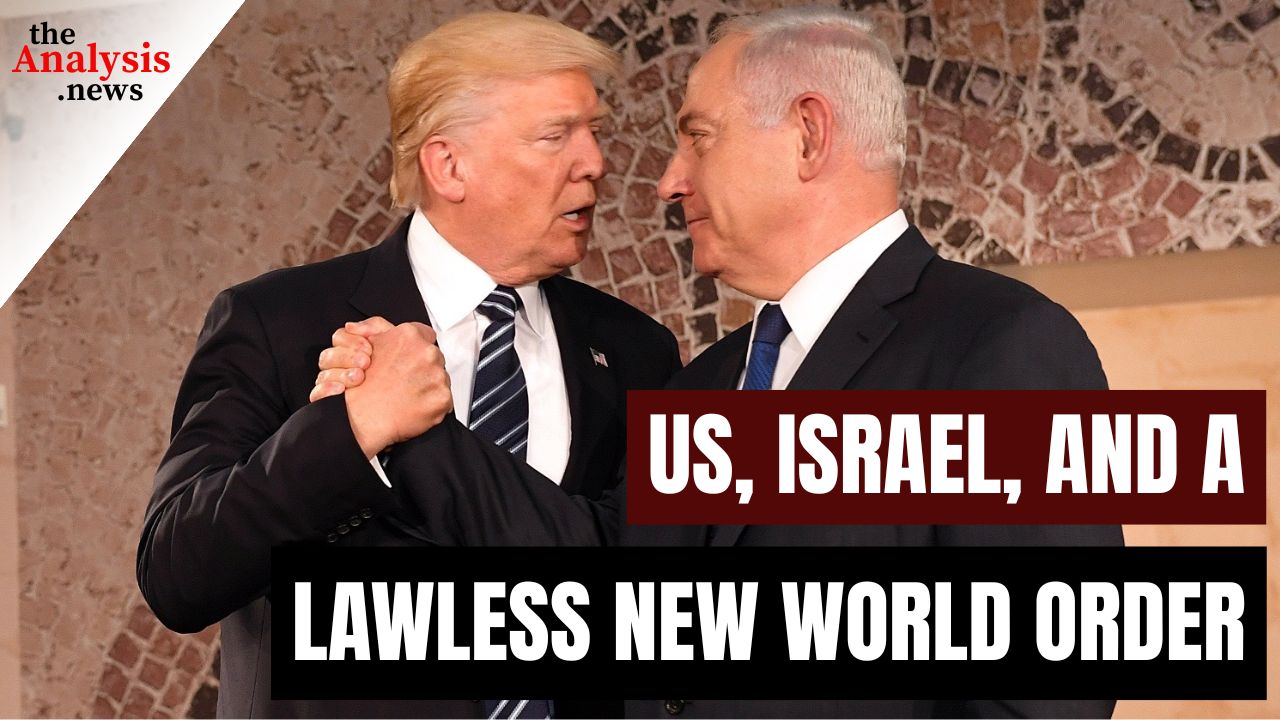
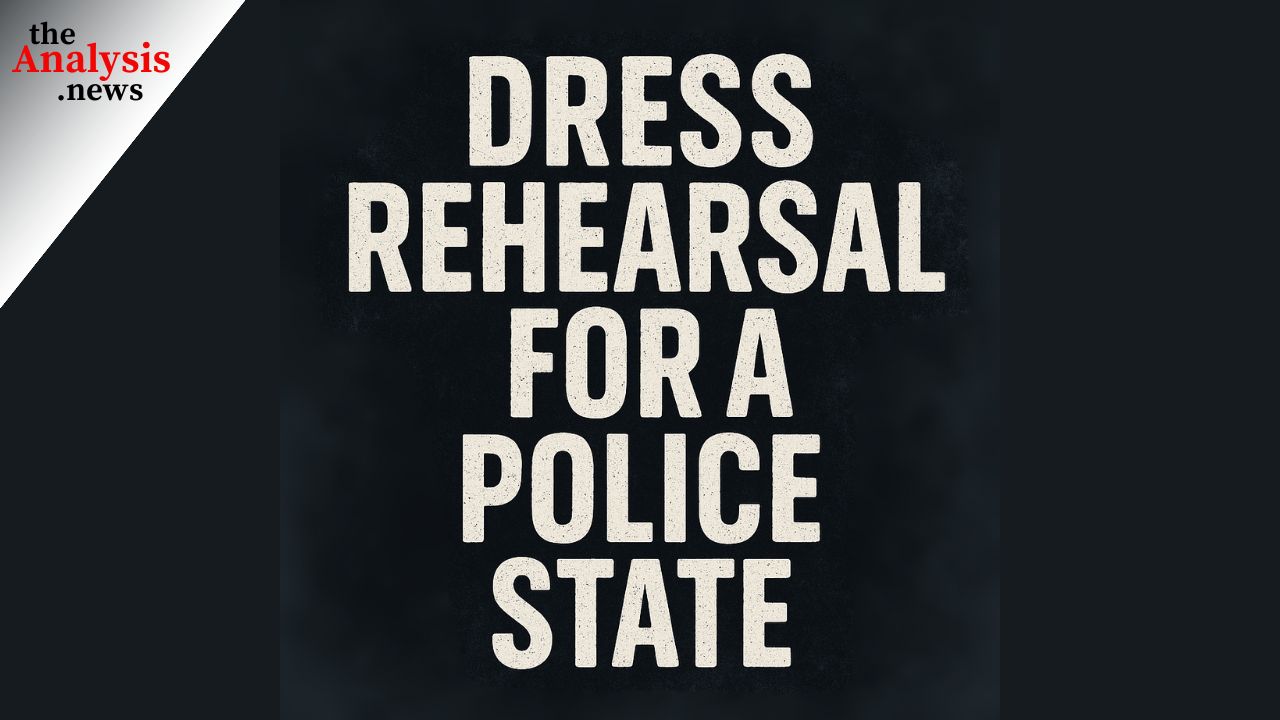

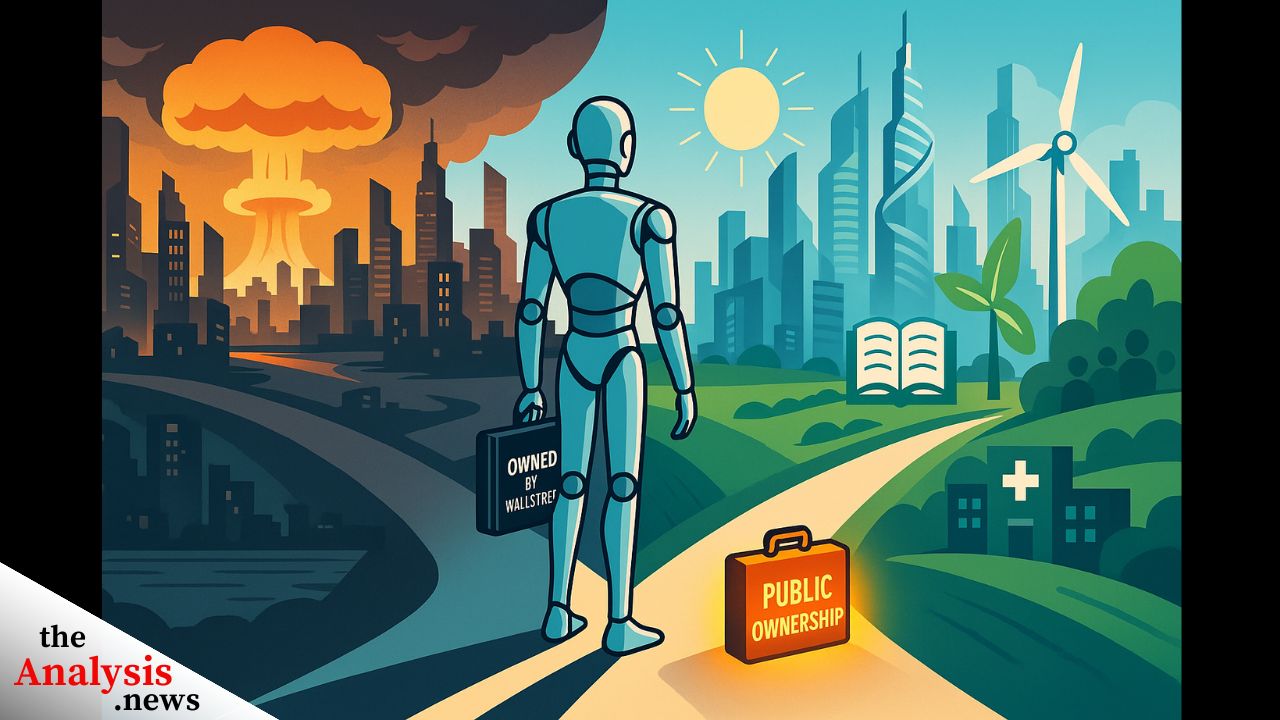

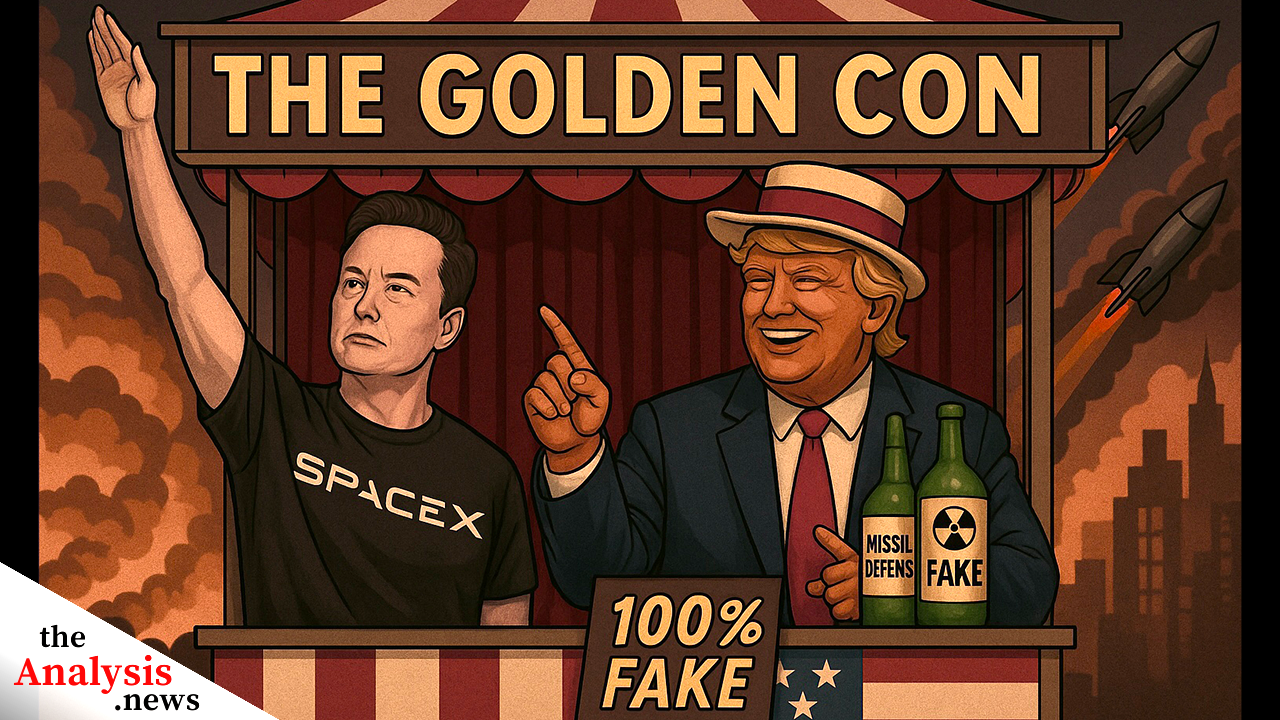
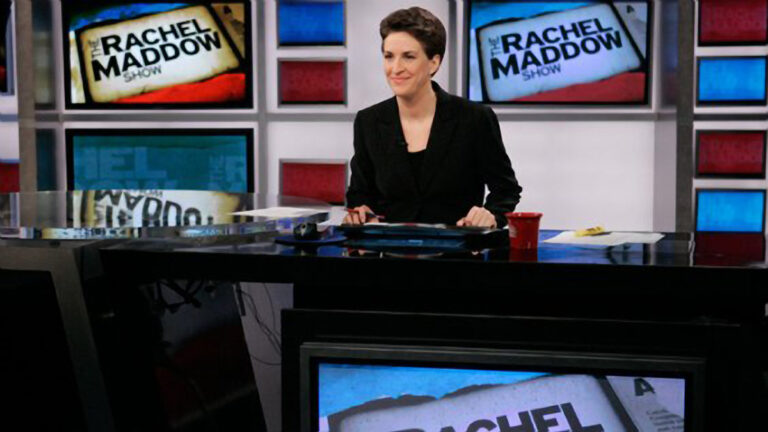


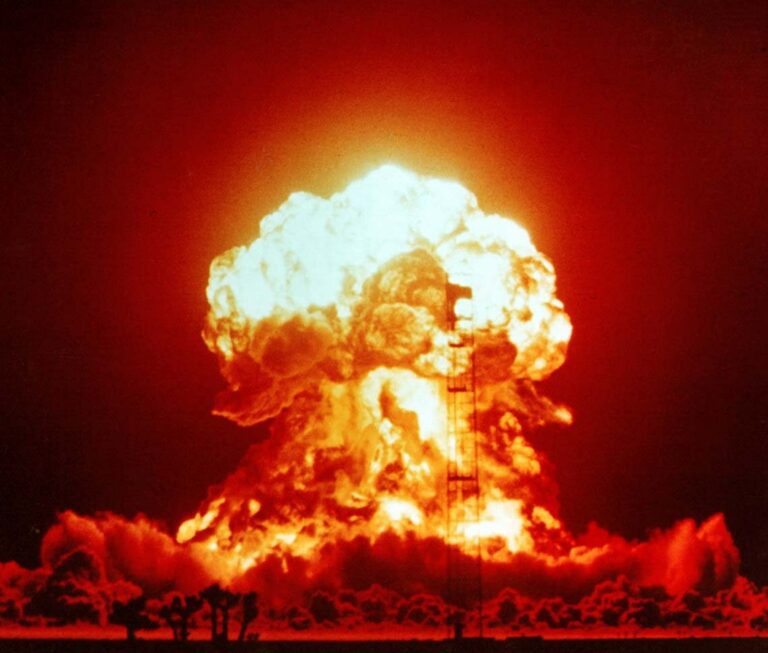
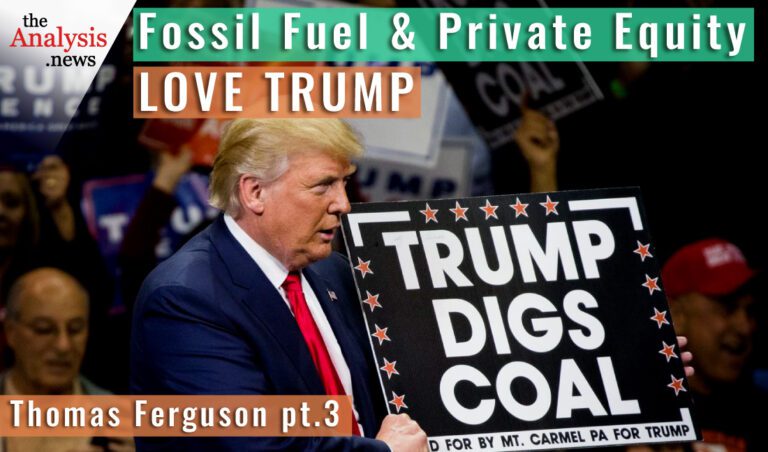
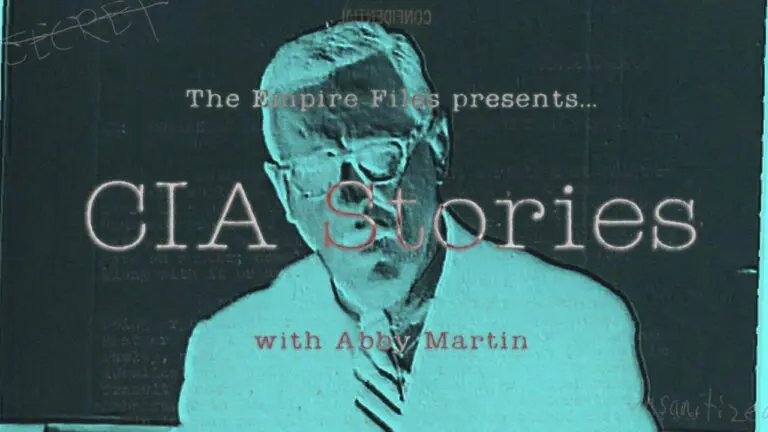
You academics are nuts. Only Maga is satanic? What about the globalist desires of Biden and Harris? You don’t think that forming a world-wide totalitarian secretive government that will force the working class into serfdom is “dark”? You don’t think that allowing the world bankers to steal all the money in the world and institute a neo-medieval fiefdom by means of central digital compulsory banking is “satanic”? This is what the Democrat Party is supporting these days; that and bone-chilling wars and genocides in Israel and Ukraine. You think playing with starting a nuclear holocaust in the middle east and Ukraine isn’t the field of play of Satan? Are you not aware that Biden BRIBED the government of Ukraine to fire a legal prosecutor who was looking into the corrupt government of Ukraine and its ties to American politicos. You don’t think Hunter Biden has been dancing with the devil? You have a very limited view of reality and you know nothing about “Climate Change”. And then there is the fact that your government is selling (and even mandating) a poisonous drug called the Covid Vaccine that is causing miscarriages in pregnancy and heart attacks in children. That’s not dark.
You are completely wrong about every point which leads me to believe that you only listen/watch Fox news. Trump surrounds himself with billionaires/millionaires and you thing that will help the American people? By dismantling the entire government offices like VA, CIA, Medicare, Dept of Education, HUD, The list is too long. Will it really take you having your social security benefits to see the writing on the wall? God is testing each and every one of us. Trump surrounds himself in evilness and you think it is all good. Sad. At least with a democrat you can speak with them, evangelize if you want. But not with Trump and Elon Musk. They will not follow laws, challenge judges (all of them) and dishonor our Constitution.